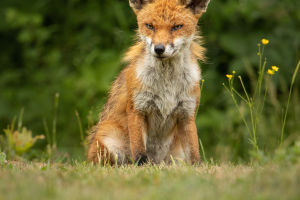Bears are among the most ferocious animals in the world and the largest surviving carnivores on land, but most of them are vegetarians or survive on a diet of fish.
With their enormous size, keen sense of smell, and extreme endurance, grizzly bears roam the earth and can be found on every continent. Today, we will list the world's largest bear, the grizzly bear, which is so deadly that trees in the forest can't stop it. The key is that their large size does not slow them down at all.
The largest bear in the world is the grizzly bear, classified as a subspecies of the brown bear, and the largest bear after the polar bear and Kodiak brown bear. While the body structure of the grizzly bear is similar to that of the brown bear, the grizzly bear's body appears to be more obese, fluffy, and heavier. Despite their appearance, grizzly bears can reach speeds of 30 miles per hour or faster.
The largest population of grizzly bears lives in the Kodiak Islands off the south coast of Alaska, and the record weight for males is 680 kg, which is already on par with polar bears. These thousands of pounds of fat stand up to 3 meters tall and land on all four feet at a shoulder height of 1.5 meters.
The size of grizzly bears is related to their food resources. Although they have the digestive system of a carnivore, grizzly bears are omnivorous like any other bear species.
For meat, the powerful, sharp-toothed, and clawed bears are strong enough to prey on a variety of North American even-toed species, including caribou, mule deer, bighorn sheep, and even large animals like moose and American bison. In Alaska's Denali National Park, grizzly bears often prey on moose calves, and about half of all moose and mule deer fawns are killed each year.
On the Pacific coast of Alaska and Canada, where grizzly bears are concentrated, they are considerably larger than their inland counterparts, most likely because of the abundance of good food on the coast.
The annual salmon run in one of the many rivers that feed into the Pacific Ocean attracts large numbers of grizzly bears. Each July-September, Pacific salmon swimming upstream compete for the waterfalls along the river, and grizzly bears, usually solitary, will "visit" in groups at this time.
They stand above the falls and feast on them with their mouths and sharp paws, with males fighting over the best "spot" to eat.
In these areas, watching grizzly bears hunt Pacific salmon has become a popular ecotourism activity in the national parks.
In addition to big fish, grizzlies can eat other things such as the "crunchy chicken-flavored" night moth larvae, which are an important source of protein for local grizzlies in Yellowstone. Pine cones, tubers, weeds, and especially berries are also on their menu. Additionally, berry seeds, which bears cannot digest, are more likely to germinate in the rich parcels of bear dung.
Their predation on fawn cubs is an important factor in controlling even-hoofed populations and maintaining stable vegetation. Bears and forests are an organic whole, no matter how you look at them.


